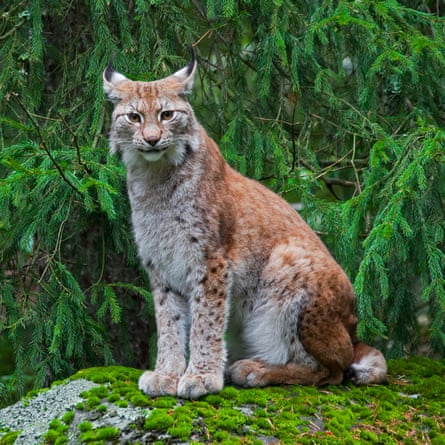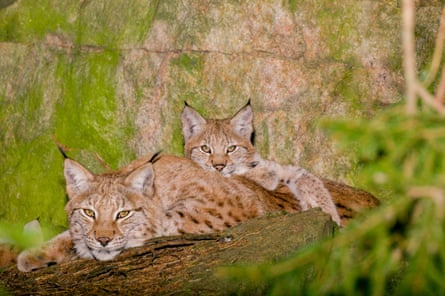Sweden has issued licences to hunters to kill a total of 201 lynx, weeks after dozens of wolves were killed in the country’s biggest wolf cull in modern times.
The number of licences to kill lynx throughout March, issued by Sweden’s country administrations, is more than double the number in recent years.
The planned cull is out of all proportion to any danger to livestock or people, say wildlife conservationists and activists, who are asking the EU to take action against Sweden for breaching environmental law.
“This is a trophy hunt, just like going to Africa to hunt lions,” said Magnus Orrebrant, the head of Svenska Rovdjursföreningen, an animal rights advocacy group that has started a petition calling for the trophy hunting of lynx to be stopped. “Hundreds of foreign hunters come to Sweden for lynx hunting because they think it is exciting.”

Conservationists warned last month that the lynx population in Europe could collapse unless immediate efforts are made to protect the animals. Tests on the remaining cats in France show that their genetic diversity is so low they will become locally extinct within the next 30 years without intervention.
There are around 1,450 lynx spread across Sweden, about 300 fewer than 10 years ago. Naturvårdsverket, the Swedish environmental protection agency, argues that the country needs only 870 animals to maintain a healthy population.
The Swedish hunters’ association, Svenska Jägareförbundet, admits the lynx do not pose a danger to humans. Henrik Falk, an adviser to the association, told the Guardian: “The hunt is absolutely not linked to any danger to humans. Neither is wolf hunting – there are no documented cases of wolves attacking humans in Swedish modern times.
“The lynx hunt is more about the excitement, and for some hunters, of course, the skin is the motivation.”

Lynx, like most other game animals in Sweden, are hunted using dogs. The EU Habitats Directive specifies that hunting may be allowed either to prevent damage to livestock or in the interests of public safety.
It is “strongly questionable” that either of these conditions applies to lynx in Sweden, said Benny Gäfwert, a predator expert at the World Wide Fund for Nature (WWF). “We do not think the hunters can invoke these exceptions, and we have notified the EU Commission,” Gäfwert said.

“That hunting occurs, we do not, in itself, have a problem with, but the extent to which it occurs in relation to the low damage caused by the lynx is unwarranted.”
The WWF is also challenging Sweden’s explanation for its ongoing wolf cull, Gäfwert said.
Historically, lynx have ranged across Eurasia but have come under intense pressure in many countries from habitat loss, inbreeding, poaching and traffic collisions. In Britain, calls to reintroduce lynx to the wild were rejected last month by the environment minister, Thérèse Coffey.
Conservationists point to the role of lynx in controlling Sweden’s large population of deer, moose and boar.
The lynx hunt in Sweden is taking place during the mating season when their fur is thickest, making it particularly attractive to hunters, said Marie Stegard Lind of anti-hunting group Jaktkritikerna. “This is completely unnecessary – a pure trophy hunt,” she said.
Find more age of extinction coverage here, and follow biodiversity reporters Phoebe Weston and Patrick Greenfield on Twitter for all the latest news and features
